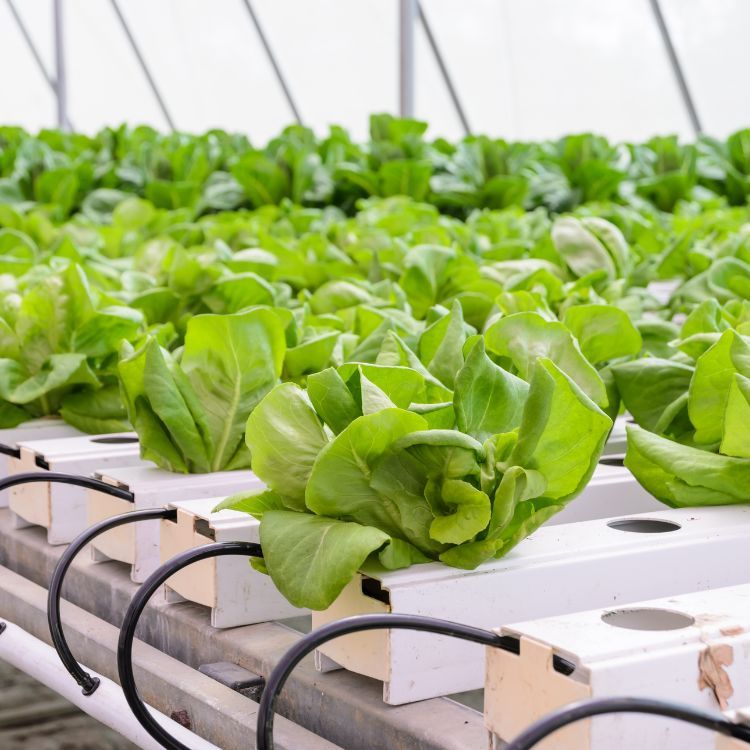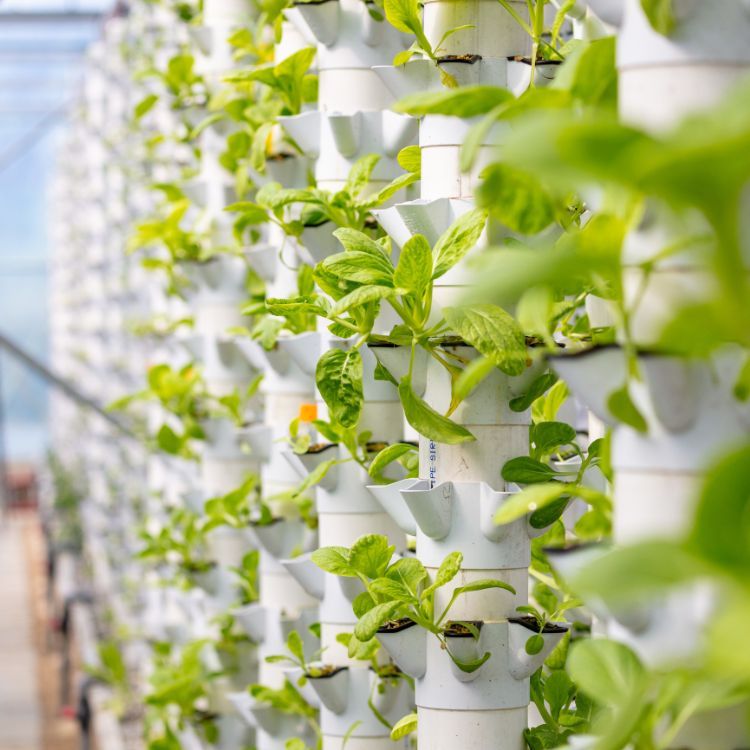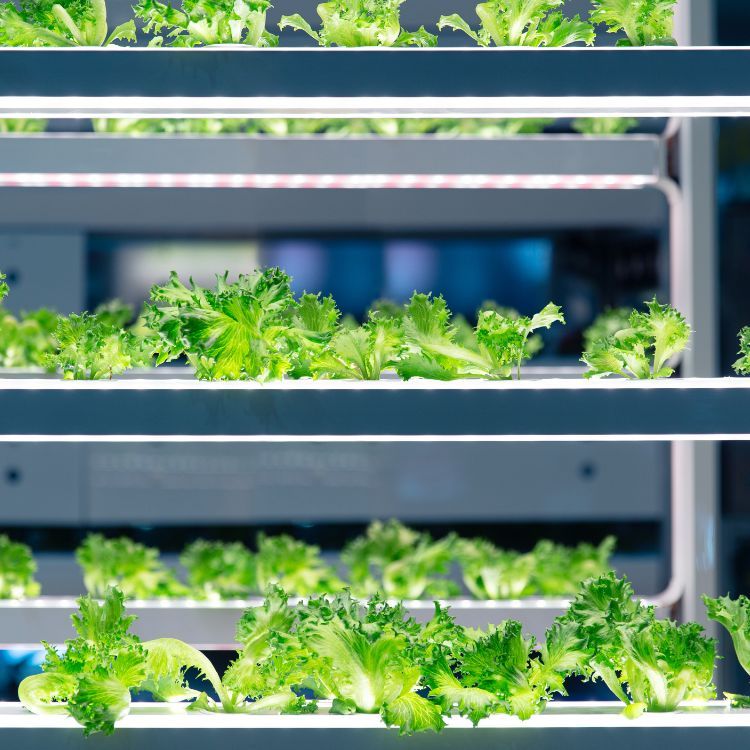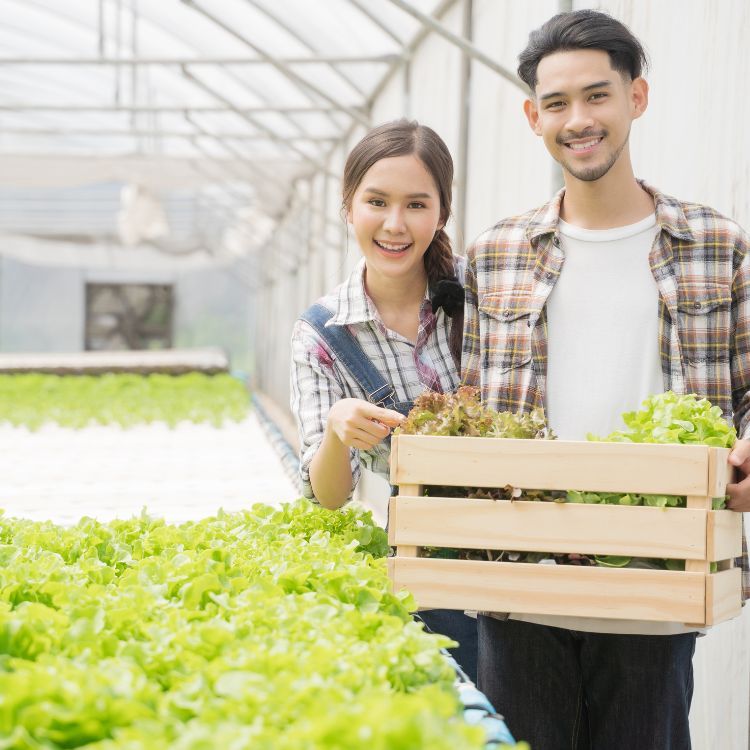
Key Takeaways
Aquaponics is a sustainable method that combines raising fish with growing plants.
It conserves water, a critical resource, using 90% less than traditional farming.
By avoiding harmful chemicals, aquaponics provides healthy, organic food.
Its efficiency allows for higher crop yield in smaller spaces, ideal for urban areas.
Aquaponics systems can be operated year-round, ensuring a constant food supply.
Unlocking the Potential of Aquaponics
Imagine a garden where the plants grow twice as fast, using just a fraction of the water, without any chemical fertilizers. This isn’t a scene from a sci-fi movie; it’s what aquaponics can do for you. Aquaponics is a game-changer for those looking to ensure a sustainable food source, especially in times of uncertainty.
What is Aquaponics and Why it Matters
Aquaponics is where the art of aquaculture (raising fish) meets the science of hydroponics (growing plants without soil). Fish waste provides an organic nutrient source for the plants, and the plants, in turn, filter and purify the water, which is then recirculated back to the fish tanks. It’s a symbiotic relationship that results in a bountiful harvest of both fish and greens.
Setting the Stage for Efficient Gardening
Whether you’re a seasoned prepper or just starting to think about self-sufficiency, aquaponics is an efficient way to garden. You can grow a variety of plants, from leafy greens to fruits and vegetables, alongside a tank of edible fish like tilapia or trout. Let’s dive into the top benefits of this incredible system.
1. Maximizing Crop Production
Most importantly, aquaponics maximizes crop production. The plants have direct access to nutrients 24/7, which means they grow faster and healthier. And because you can stack grow beds vertically, you can produce more in the same footprint than with traditional soil gardening.
Sustainable Growth Cycles
Aquaponics creates a sustainable cycle of growth. The waste from the fish feeds the plants, and the plants clean the water for the fish. It’s a natural ecosystem that you can harness in your own backyard.
Plants get continuous nutrients, leading to faster growth.
Fish produce waste, which is converted to plant food, reducing the need for fertilizer.
The system can be organic, as no synthetic fertilizers or pesticides are needed.
Year-Round Harvesting
“With aquaponics, every season is a growing season.” This means fresh lettuce in December and ripe tomatoes in February. By controlling the environment, you can enjoy a harvest that defies the calendar.
Aquaponics systems can be housed in greenhouses or indoors with grow lights, allowing for climate control and year-round production. This isn’t just convenient; it’s a lifeline when traditional growing methods are hampered by weather or off-seasons.
Now, let’s talk about the lifeblood of any garden: water.
2. Conserving Water Resources

Water is precious, and in many places, it’s becoming increasingly scarce. Aquaponics is a water-wise solution that uses up to 90% less water than traditional soil gardening because the water is recirculated in the system.
The Closed-Loop System Advantage
The beauty of aquaponics lies in its closed-loop system. Water from the fish tank is pumped to the plants; the plants clean it, and it flows back to the fish. This cycle repeats endlessly, dramatically reducing the need for fresh water.
Reduction in Water Usage
Because the water is constantly recirculated, the only significant water loss comes from evaporation and plant uptake. This makes aquaponics an incredibly water-efficient method of farming, especially in areas where water is a limited resource.
Organic Produce at Your Fingertips
One of the crowning glories of aquaponics is the ability to grow organic produce. By default, aquaponics creates a natural, chemical-free environment for plants, yielding food that’s not only good for you but also for the planet.
There’s something incredibly satisfying about plucking a ripe, juicy tomato right from your own system. It’s the epitome of farm-to-table dining, without the farm or the need for a table, as you can munch on your harvest right there among the greenery.
And the taste? Unbeatable. There’s a marked difference in flavor when it comes to vegetables and fruits that have been allowed to grow at their own pace, without the aid of synthetic helpers. It’s nature’s way, and it just works.
Risks of Commercial Agriculture vs. Aquaponics
When you compare commercial agriculture to aquaponics, the differences are stark. Conventional farming often involves pesticides, herbicides, and fertilizers that can be harmful to the environment and to our health.
Commercial agriculture can contribute to soil degradation and water pollution.
Pesticides used in traditional farming can end up in our food and drinking water.
By contrast, aquaponics uses no chemical fertilizers or pesticides.
Aquaponics presents a cleaner, greener alternative. It’s a closed-loop system, which means there’s no runoff polluting nearby waterways. And since everything is contained, pests are less of an issue, reducing the need for harmful pesticides.
Therefore, choosing aquaponics isn’t just about growing food; it’s about making a conscious decision to protect our health and the environment.
5. Reducing Reliance on External Supply Chains
In today’s world, where supply chain disruptions can happen without warning, having an independent source of food is invaluable. Aquaponics offers this independence, reducing reliance on external supply chains that can be fragile and unpredictable.
With an aquaponics system, you’re in control. You know exactly what goes into your food and, more importantly, what doesn’t. No more worrying about where your next meal is coming from or what hidden chemicals it might contain.
Building Self-Sufficient Food Systems
Building a self-sufficient food system is empowering. Aquaponics not only provides fresh produce and fish, but it also imparts invaluable skills. You learn about water chemistry, fish health, plant biology, and system design—all critical knowledge for resilience in uncertain times.
And when you share this knowledge with others, you’re not just growing food; you’re growing a community. That’s powerful.
Impact of Food Transport on Quality and Availability
Transporting food over long distances can degrade its quality and nutritional value. With aquaponics, your food travels mere feet, not miles. This means you get to enjoy fresher, more nutritious produce, harvested at the peak of ripeness, rather than prematurely picked to withstand a long journey.
Besides that, growing your own food can be a safeguard against market shortages and price hikes. In an aquaponics system, you’re less affected by external factors that can impact the availability and cost of food.
6. Lower Operational Costs
While the initial setup of an aquaponics system might require some investment, the ongoing operational costs are typically lower than those of traditional gardening. Let’s break it down.
Minimizing Input for Maximum Output
In aquaponics, the fish do much of the work for you. Their waste is the nutrient solution for your plants, so there’s no need to buy fertilizer. Plus, the water recirculates, slashing your water bill. It’s a system that keeps on giving without taking too much.
Comparing Costs: Aquaponics vs. Traditional Farming
When you look at the numbers, aquaponics often comes out on top. Traditional farming requires ongoing costs for soil amendments, chemical fertilizers, and large amounts of water—all of which add up quickly.
Aquaponics systems can save up to 90% of water compared to traditional farming.
No need for costly chemical fertilizers or pesticides.
Energy costs can be offset by using solar panels or other renewable energy sources.
Therefore, if you’re looking for a cost-effective way to garden, aquaponics is worth considering.
7. Utilizing Small and Urban Spaces

Don’t have acres of land? No problem. Aquaponics systems can be scaled to fit small and urban spaces, making them perfect for city dwellers or those with limited outdoor areas.
You can set up a mini aquaponics system on a balcony, rooftop, or even indoors. It’s about making the most of what you have, where you are.
The Versatility of Aquaponic Setups
Aquaponics is all about flexibility. You can design a system that fits your space, whether it’s a vertical tower for herbs, a small tank for leafy greens, or a larger setup for a variety of vegetables and fish. The possibilities are as varied as the plants you can grow.
Designing for Efficiency in Compact Areas
Designing an aquaponics system for a small space requires creativity, but it’s certainly doable. Vertical designs can maximize your growing area, and choosing the right fish and plants can ensure you get the most out of your system.
And when you harvest your own food from a system you designed, the satisfaction is immense.
8. Providing a Source of Protein
Aquaponics isn’t just about growing plants; it’s also about raising fish, which are a valuable source of protein. In a survival situation, having access to protein is crucial, and aquaponics provides that in spades.
Integration of Fish Farming
Choosing the right fish for your system is important. Tilapia, trout, and other hardy species can thrive in an aquaponic environment, providing you with a steady supply of fresh fish. And the best part? You’re raising them in a sustainable, ethical way.
Choosing the right fish for your aquaponics system is a critical step that will affect the overall health and productivity of your garden. You want fish that are hardy, adaptable, and fast-growing, such as tilapia, catfish, or carp. These fish are excellent choices because they can withstand varied water conditions and are relatively easy to care for.
Consider the climate you’re in as well. If you live in a cooler area, trout might be the best choice, as they thrive in colder water. In warmer climates, tilapia is often favored for its ability to grow quickly in warmer temperatures. Keep in mind the dietary requirements and space needs of the fish you choose to ensure they can grow healthy and strong, providing the necessary nutrients for your plants.
9. Easier Pest and Weed Management
Aquaponics offers a unique advantage over traditional soil gardening when it comes to pests and weeds. Since there is no soil for weeds to take root in, you’ll spend less time weeding and more time enjoying your garden. Pests are also less of a problem, as many of the common garden pests are associated with soil.
Natural Barriers Against Common Gardening Woes
The closed system of aquaponics reduces the chances of pest invasions.
Aquaponic systems can be covered or placed indoors, which further protects against pests.
By maintaining a healthy ecosystem, beneficial bacteria and insects can naturally keep pest populations in check.
Moreover, because aquaponics is often set up in a controlled environment, like a greenhouse or indoors, you can manage the conditions to prevent the introduction and spread of pests. This means less reliance on pesticides, which aligns with the organic nature of aquaponics.
When it comes to maintenance, aquaponics is relatively low-effort once the system is balanced. You’ll monitor water quality, fish health, and plant growth, but the day-to-day work is minimal compared to traditional gardening.
Simple Maintenance Routines
Regularly check the water’s pH, ammonia, nitrite, and nitrate levels to ensure a healthy environment for both fish and plants. Feeding the fish and inspecting the system for any signs of stress or disease will also be part of your routine. The simplicity of these tasks means more time to enjoy the fruits of your labor.
10. Educational Value and Skill Building

Aquaponics isn’t just about growing food; it’s also an educational journey. It’s a living laboratory in your backyard that teaches you about ecosystems, biology, chemistry, and engineering. You’ll gain skills that go beyond gardening, learning how to maintain a balanced ecosystem, and understanding the symbiotic relationships between fish and plants.
Lifelong Learning with Aquaponics
Every day with an aquaponics system brings new lessons and opportunities for personal growth. Whether it’s adjusting the flow rate of water, experimenting with different plant varieties, or breeding fish, aquaponics is a rich educational experience that can be shared with family and friends.
Knowledge Transfer for Future Self-Reliance
The skills and knowledge you gain from aquaponics are invaluable, especially in today’s world where self-reliance is increasingly important. By mastering aquaponics, you’re equipped with the tools to provide for yourself and your community, no matter what the future holds.
Frequently Asked Questions (FAQ)
Can Aquaponics Be 100% Organic?
Absolutely. Aquaponics systems can be managed organically by avoiding synthetic fertilizers and pesticides, using organic fish feed, and employing natural methods for pest and disease control. The result is fresh, organic produce and fish that you can feel good about eating.
How Much Does it Cost to Start an Aquaponics Garden?
The cost of starting an aquaponics garden can vary widely, depending on the size and complexity of the system. A small, DIY setup could cost as little as a few hundred dollars, while larger, commercial systems can run into the thousands. Remember, the long-term savings on water and food costs can make aquaponics a wise investment for preppers.
Is Aquaponics Suitable for Cold Climates?
Yes, with proper planning and equipment, aquaponics can be adapted for cold climates. Insulated greenhouses and water heaters can maintain the right temperature for both fish and plants to thrive, even when it’s snowing outside.
What Types of Plants Can Be Grown in an Aquaponics System?
Most leafy greens, herbs, and fruiting plants like tomatoes, cucumbers, and peppers do well in aquaponics systems. Root crops can be grown with some modifications. The key is to choose plants that match the nutrient output of your fish and the environmental conditions of your system.
How Long Does it Take to Set Up an Aquaponics System?
Setting up a basic aquaponics system can take a few days to a week, depending on its complexity. However, it takes time for the system to cycle and stabilize before it’s ready for full-scale planting and fish introduction. This cycling process can take several weeks to ensure a healthy environment for both plants and fish.
As we wrap up this exploration of aquaponics, remember that this isn’t just a gardening method; it’s a commitment to a sustainable, self-sufficient lifestyle. By embracing aquaponics, you’re taking a step towards resilience, ensuring that no matter what the world throws your way, you’ll have the skills and resources to thrive.
Now, are you ready to start your own aquaponics system and enjoy all these benefits? Check out the selection of aquaponics supplies at Survival Essentials and take the first step towards a self-sufficient, sustainable future.







Leave a Reply